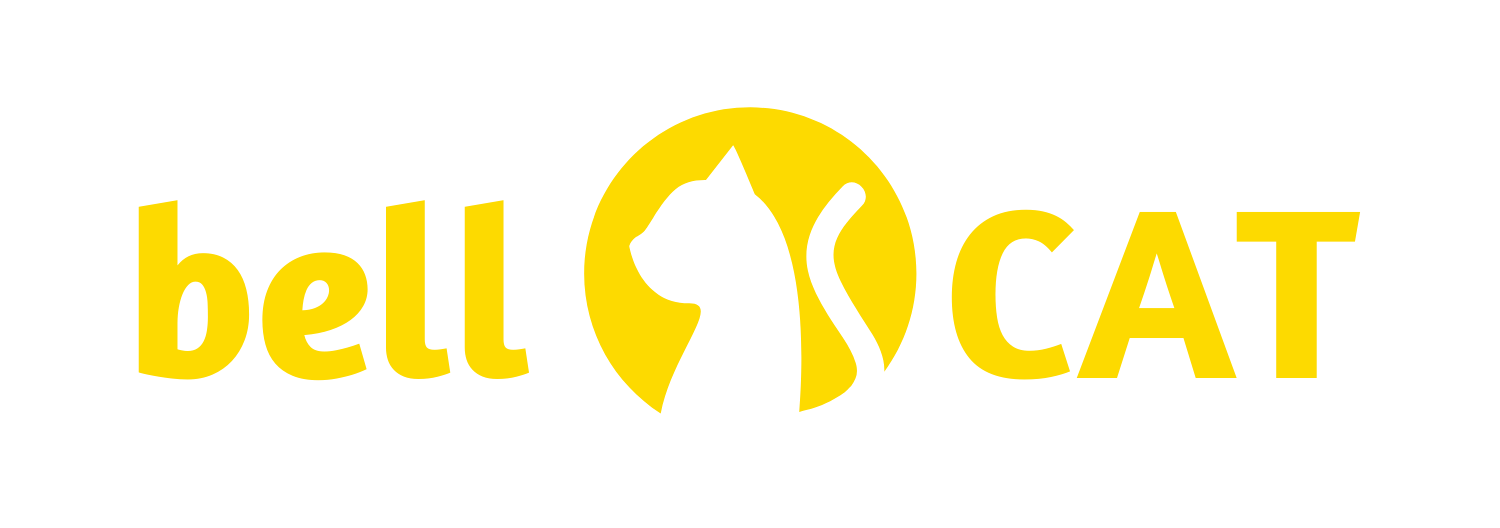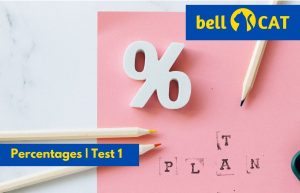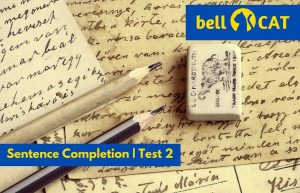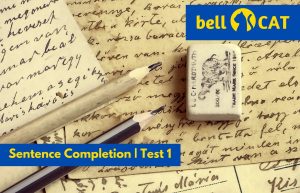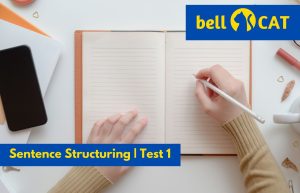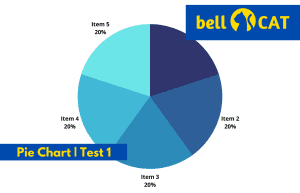Directions for questions 1 to 3: Read the following passage and solve the questions based on it.
Ten coins are distributed among four people P, Q, R and S such that one of them gets one coin, another gets two coins, the third gets three coins and the fourth gets four coins. It is known that gets more coins than P, and S gets fewer coins than R.
Q.1. If the number of coins distributed to Q is twice the number distributed to P, then which one of the following is necessarily true?
(a) R gets an even number of coins
(b) R gets an odd number of coins
(c) S gets an even number of coins
(d) S gets an odd number of coins
Q.2. If R gets at least two more coins than S, then which one of the following is necessarily true?
(a) Q gets at least two more coins than P.
(b) Q gets more coins than S
(c) P gets more coins than S
(d) P and Q together get at least five coins
Q.3. If gets fewer coins than R, then which one of the
following is not necessarily true?
(a) P and Q together get at least four coins than P
(b) Q and S together get at least four coins
(c) R and S together get at least five coins
(d) P and R together get at least five coins
Directions for questions 4 to 7: Read the following passage and solve the questions based on it.
To make the non-technical background new joiners understand the process of manufacturing colour TVs better, LG has hired the services of Due North Inc. consultants. Due North is a consultancy firm which provides technical training of all the household equipment to the non-tech background new joiners at LG. To facilitate the training process, it has been decided that there will be six groups of new joiners namely A, B, C, D, E and F and each of the groups is scheduled at least once a week. All the groups will start their training on the same day and will also end their training on the same day.
Following points are to be taken into consideration while making the training schedule:
(i) Sunday is a holiday.
(ii) B group is scheduled all days except Friday and Saturday
(iii) C group meets four days in succession.
(iv) F group meets only from Monday to Thursday.
(v) E group is scheduled everyday, but not on Thursday and Saturday
(vi) A group is scheduled on alternate days.
(vii) C group does not meet on Monday and Tuesday only.
(viii) A and D groups never meet on the same days.
(ix) D group is scheduled only once a week on either Wednesday or Friday.
Q.4. Which groups are scheduled for the same number of classes during the week?
(a) B, A, F only
(b) E, B, C only
(c) E, F, A only
(d) None of these
Q.5. If a certain class of D is scheduled on the same day as that of the B group, then how many groups are scheduled on Friday?
(a) 2
(b) 3
(c) 4
(d) 5
Q.6. For how many groups do we have a definite training schedule, for the whole week?
(a) 4
(b) 2
(c) 3
(d) 5
Q.7. Which two groups can never be scheduled on the same day?
(a) C and D
(b) C and E
(c) A and D
(d) None of these
Directions for questions 8 to 11: Read the following passage below and solve the questions based on it.
There are five identical looking boxes containing different objects in each of them and every box has a label indicating its contents. The following is the correct description of the contents and the label of each box:
| Contents | Label |
| Two Pins | PP |
| Two Balls | BB |
| Two Clips | CC |
| One Pin and one Clip | PC |
| One Ball and one Clip | BC |
Somebody has mischievously interchanged these labels in such a way that no box carries the label describing its contents correctly.
Q.8. The first box which was opened contained the label PP and the second box opened contained the label PC. It is also known that out of the four items in the two boxes, one item was definitely a ball. Then which of the following has to be true?
(a) Other three items will not contain two balls
(b) Other three items will not contain any clip
(c) Other three items will contain at least one clip
(d) None of these
Q.9. Box PP contained two clips, box CC contained two pins and the box BB contained one ball. Then which of the following will definitely be false?
(a) The box BC contains one pin and one clip
(b) The box BB contains one ball and one clip
(c) The box BC contains two balls
(d) The box PC contains two balls
Q.10. If the first box containing the label BC was opened and it was found that one item is a ball, then which of the following is definitely true?
(a) The other item may be either a ball or a clip
(b) The other box with the BB label contains one ball and one clip
(c) The other item will not be a ball
(d) The other item will also be a ball
Q.11. If the information is available that the box PC does not contain either any pin or any clip, box PP does not contain any pin and box and CC contains one clip and one ball. Which of the following will definitely be true if only one of the remaining boxes is opened?
(a) The box will have one pin and one clip
(b) The box will have at least one clip
(c) The box will have at least one pin
(d) None of these
Directions for questions 12 to 16: Read the following passage and solve the questions based on it.
There are various rides available at the annual Lucknow Mahotsav. One of the rides that is available is the roller coaster ride, comprising five cars, numbered 1 through 5 from the front to back. Each car can accommodate up to two riders, seated side by side. Six persons—T, G, L, M, P and J, are taking the ride simultaneously. The Following information is available regarding their seating pattern:
(i) L is sharing a car.
(ii) M is not sharing a car and is seated immediately behind an empty car.
(iii) T is not sharing a car with either G or P.
(iv) G is in either the third or the fourth car.
Q.12. Which of the following people definitely occupy the second car?
(a) L only
(b) T and G
(c) L and M
(d) None of these
Q.13. If G is immediately behind Ls car and immediately ahead of T’s car, all of the following must be true except
(a) G is in the fourth car
(b) P is in the third car
(c) T is in the fifth car
(d) L is in the third car
Q.14. Which one of the following statements cannot be true?
(a) Neither T nor G is sharing a car with anybody else
(b) Neither M nor J is sharing a car with anybody else
(c) T is sharing a car and J is sharing a car
(d) G is sharing a car and P is sharing a car
Q.15. If P is in the second car, how many different combinations of riders are possible for the third car?
(a) 1
(b) 2
(c) 4
(d) None of these
Q.16. Assume that a 7th person is in with J in the first car and all the other conditions remain the same. Which of the following is a complete list of persons who might be in the fifth car?
(a) M
(b) G,P
(c) T, L, P
(d) T, L, M
Directions for questions 17 to 20: Read the following passage and solve the questions based on it.
‘Vaastu-shastra’ says that the dining table should not be rectangular, rather it should be hexagonal, as it helps in reducing the conflict. Accordingly, Mr Verma bought a hexagonal dining table for his six office employees A, B, C, D, E and F.
One day while taking lunch they were sitting along the sides of the hexagonal table. The following information is given regarding their seating postions:
(i) F, who is sitting exactly opposite A, is to the immediate right of B.
(ii) D is between A and B and is exactly opposite C.
Q.17 A is sitting between which of the following pairs of persons?
(a) D and E
(b) B and E
(c) B and C
(d) E and C
Q.18. Four of the following pairs are alike on the basis of sitting positions and so form a group. Which is the one that does not belong to the group?
(a) A. D
(b) B, C
(c) B, F
(d) C, E
Q.19. Who is sitting opposite B?
(a) C
(b) A
(c) E
(d) Cannot be determined
Q.20. Who is sitting to the left of F?
(a) B
(b) C
(c) A
(d) None of these
Directions for questions 21 to 23: Read the following passage and solve the questions based on it.
There are nine judges G, H, I, K, L, M, N and O, who have to appear on a series of three benches. Each bench will consist of three judges and each judge will appear in exactly one bench. The benches must be arranged according to the following conditions:
(i) I and N must be on the same bench.
(ii) K and L must be on the same bench.
(iii) O and I cannot be on the same bench.
(iv) M must appear on the second bench.
(v) Either J or M or both must appear on the bench with H.
Q.21. Which of the following judges could appear on a bench together?
(a) G L O
(b) G J M
(c) K I M
(d) N I J
Q.22. Which of the following cannot be true?
(a) I appears on the second bench
(b) H appears on the third bench
(c) O appears on the third bench
(d) J appears on the first bench, and H appears on the third
Q.23. The third bench could consist of all of the following except
(a) K, L, O
(b) K, I, J
(C) G, H, J
(d) G, I, N
Answer key:
1.d | 2.b | 3.a | 4.b | 5.a | 6.d | 7.c | 8.d | 9.c | 10.d | 11.c | 12.d | 13.b | 14.a | 15.d | 16.d | 17.a | 18.b | 19.c | 20.a | 21.d | 22.d | 23.b
